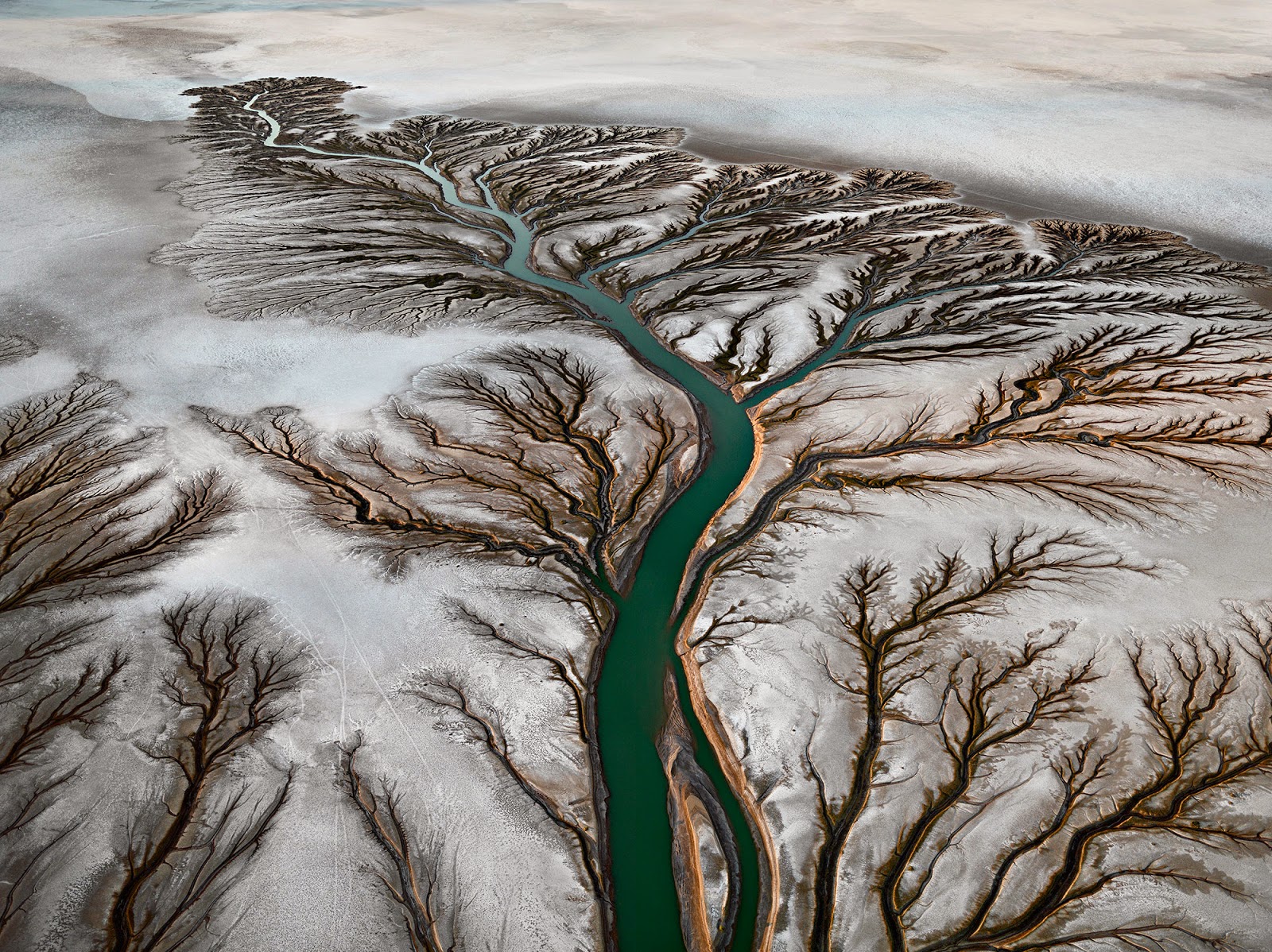04/09/14
Interview with Edward Burtynsky
Edward Burtynsky: Watermark
Edward Burtynsky (b.1955) is a Canadian photographer and
filmmaker, known for his large-format photography of natural and industrial
landscapes and the crossover points between humankind and nature. His latest
project, focusing on water in all its aspects, has led to an exhibition, a
book, and a feature documentary film.

Anna McNay: How was it
for you, as a photographer, working in collaboration with two other people –
co-director Jennifer Baichwal and producer Nicholas de Pencier – to make the
film? Clearly you’re behind the still photography, but were you responsible for
the moving imagery as well?
Edward Burtynsky: When I started the Water project, for the
first two years, it was very much just me and one other assistant, because I
was trying to block out the central ideas and figure them out visually. I
worked through the stills, and once I had maybe 60-70% of the themes confirmed,
with visuals to support them, we came in with the film crews and started to
expand on that. I was only directly responsible for maybe 5-10 minutes of the film
footage with my own camerawork. Largely, it was Nick [de Pencier], who is a
cameraman as well as a producer. I would show him an image that I’d picked and
ask him to work with the technologies to bring that image into film. I wasn’t
behind the actual camera, but I was choosing the subject matter and the frames and
then having the camera take them.
AMc: Jennifer
[Baichwal] has spoken about the need to be in a place in an authentic way and
to convey that authenticity. How do you go about ensuring this when you’re
carrying a large amount of equipment and presumably don’t always speak the
language?
EB: We ran into some real obstacles in India, trying to get
some high vantage points for the Kumbh Mela festival. There were 30 million
people there on one day and we wanted to really try and get that sense of what
30 million people trying to bathe in one spot looked like. We wanted to get up
high but they were afraid of all our technology. We had remote helicopters and
a 50 foot pole. They wouldn’t let us use the tools that we wanted or put them
in the places that we wanted, so it was a real struggle. Generally, however, we
tend to be there long enough so that those who we’re engaging with almost
forget that we’re there. You’re just there, rolling. Eventually they forget
you’re there and they say something or do something. You wouldn’t get that with
traditional film. The new medium of digital video has opened up the potential
to really be there with the subject until the camera disappears.
To read the rest of this interview, please go to: http://www.photomonitor.co.uk/2014/09/watermark/